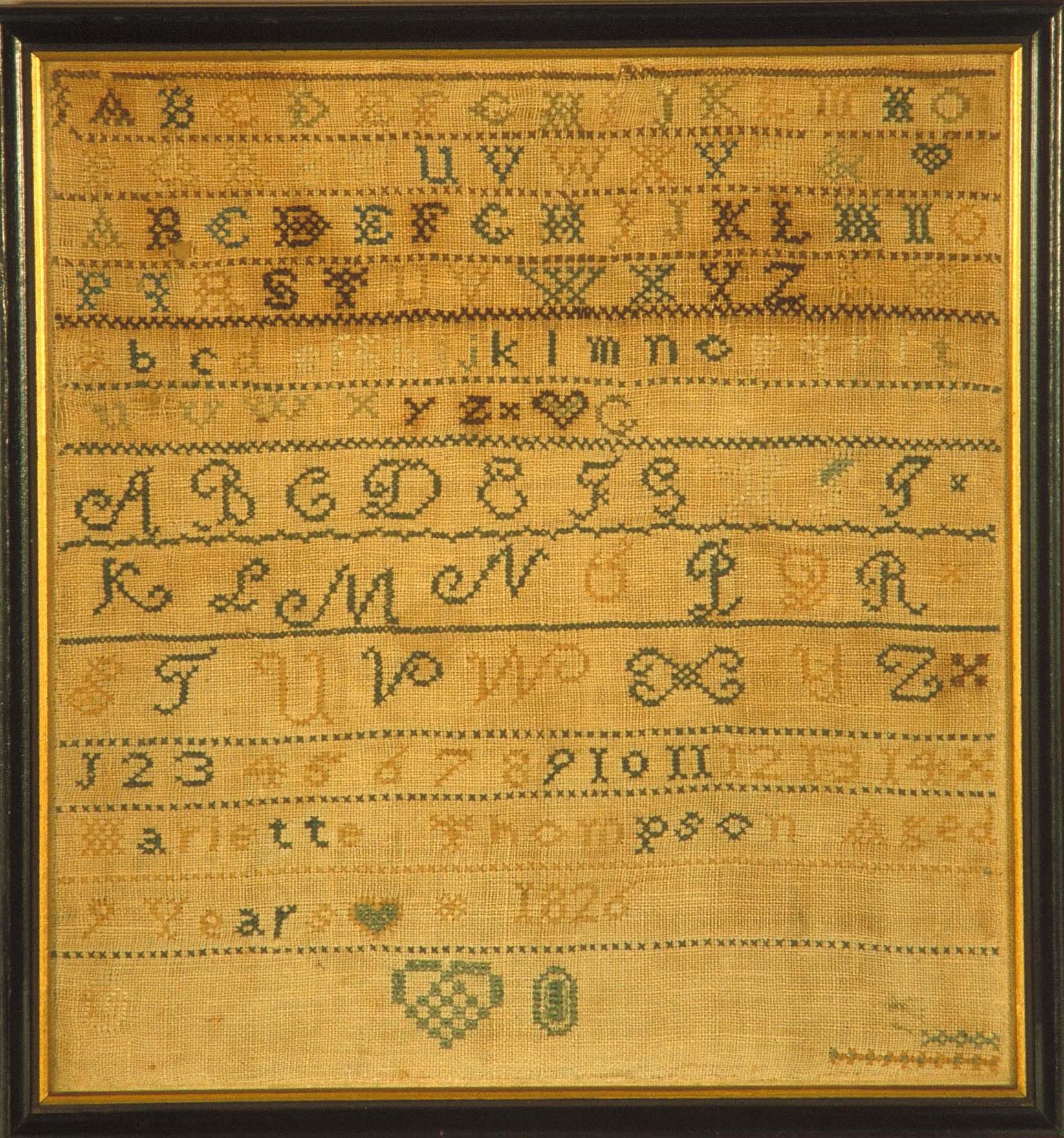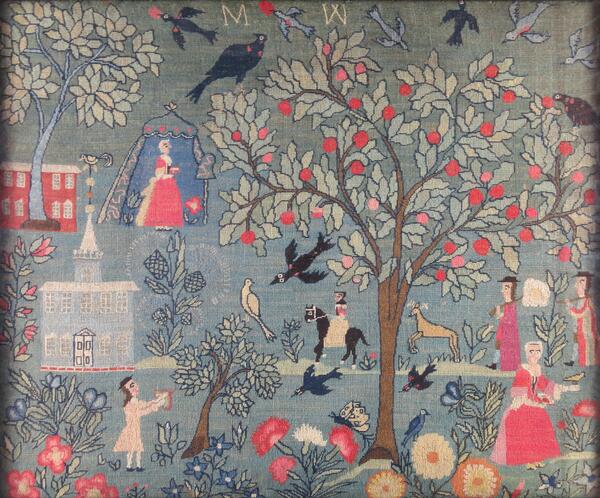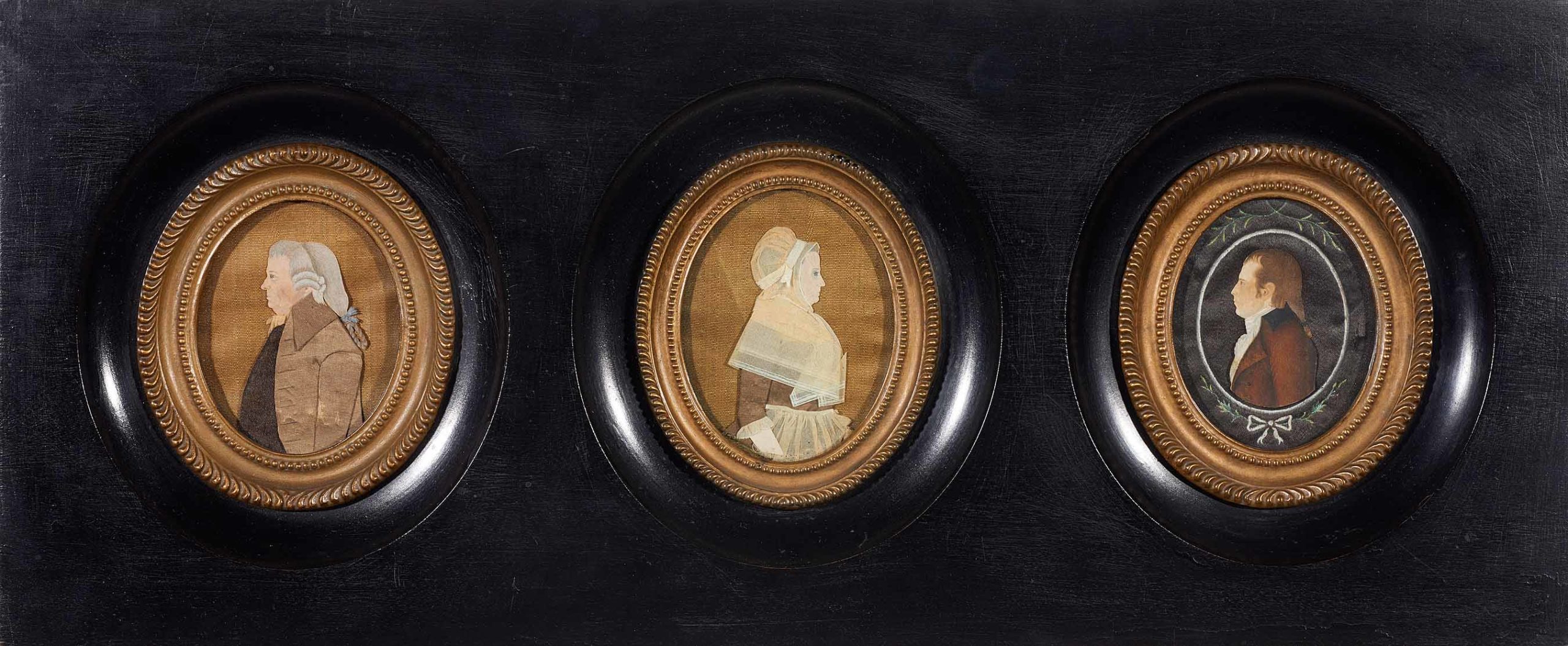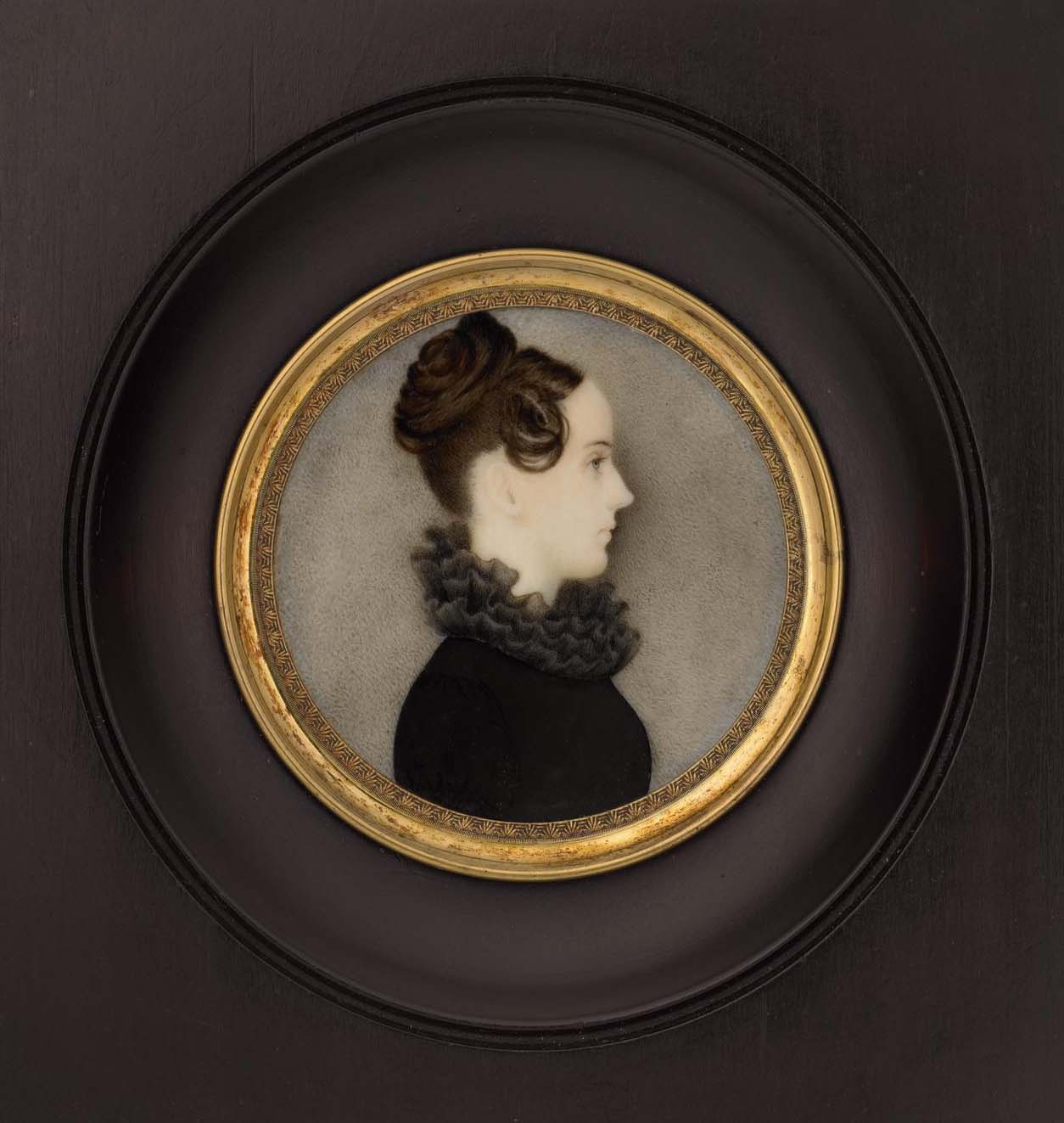Eileen Donovan
Director of Learning & Engagement
Lyman Allyn Art Museum
TEACHER'S SNAPSHOT
Topics:
Art, Early Republic, Education, Women, Work
Town:
New London
Historical Background
New London, Connecticut sisters Mary Way (1769–1833) and Elizabeth (Betsey) Way Champlain (1771–1825) were among the earliest professional women artists in the United States. Working between about 1789 and 1825, they initially produced unique paper portraits “dressed” with fabric clothing that were unlike anything else being produced in America at this time.
In the 18th and early 19th centuries, young women were educated in the domestic arts to prepare them for running a household. Girls were taught practical and decorative sewing skills by family members or local instructors, and families with enough money sent their older daughters to secondary schools to learn drawing, painting, and music, in addition to needlework, reading, and writing.
While the details of Mary and Betsey Way’s education is unknown, the sisters likely attended a secondary school where they acquired skills in sewing, needlework, and drawing, which they subsequently honed and adapted to create their unique dressed portrait miniatures.
D1: Potential Compelling Question
D1: POTENTIAL SUPPORTING QUESTIONS
- What type of education was available to women in the late 18th and early 19th centuries?
- How did wealth, race, and geographic location influence women’s access to different types of education?
- How was the experience of professional female artists in this time similar to, or different from, that of male artists?
D2: TOOL KIT

“The Way Sisters: New London Portrait Painters of the Early Republic” background information

Sampler. Mariette Thompson, American, 1826. Silk and Cotton threads on linen canvas.
Yale University Art Gallery. Gift of Archer M. Huntington, M.A. (Hon.) 1897, in memory of his mother, Arabella D. Huntington, by exchange. 1997.63.2.

Pastoral Scene. Mary Whitehead, American, 1740. Needlework. Lyman Allyn Art Museum, 1974.94.

Dressed Miniature Portraits of a Man and Woman from the Deshon family. Mary Way, American. ca. 1810, mixed media with fabrics and painted paper.
Portrait of a Young Man. Mary Way, ca. 1810, watercolor on paper.
Lyman Allyn Art Museum, gift of Ursula & Gertrude Grosvenor, 1949.122 a-c.

Elizabeth Bassal Meiller Briggs. Attributed to Mary Way or Elizabeth Way Champlain, American, 1820. Watercolor on Ivory.
Yale University Art Gallery, Gift of Mildred S. Prince. 1969.37.2.
Mary Way Advertisement, The Evening Post (New York), December 27, 1811.
D3: INQUIRY ACTIVITY
1. Introduce the compelling question and have students develop a list of supporting questions.
2. Share the 1-page “Background” about Mary Way and Elizabeth Way Champlain with the students, and encourage them to discuss what they think education was like for women in the late 18th and early 19th centuries. How do the examples of what Mary Way and Elizabeth Way Champlain studied compare to what the students are studying today?
3. Have the students explore the sampler and pastoral scene and discuss, using the following prompts:
- What different skills were used to create these works of art?
- What do they think the artists studied, in school and at home, to create the artworks?
- What else might they have studied and learned?
4. Next, have students examine the portraits:
- What do they notice about these works of art?
- What clues do they notice that tell us that these works were made in a different time?
- What do they see that makes these works similar to, or different from, other portraits they have seen?
- How would you describe the people shown in each portrait?
5. Finally, read the advertisement:
- Why do you think this advertisement was made?
- How did Mary promote herself as an artist?
- Who do you think would have read, and responded, to this advertisement?
6. Wrap up: As women artists, what might the Way sisters have experienced that was similar to, or different from, male artists?
D4: COMMUNICATING CONCLUSIONS
Create an ad:
When Mary Way moved to New York City, she placed an advertisement in the newspaper to promote herself as a portrait artist and painter to get new jobs. Have the students choose a skill they excel at to create an advertisement for themselves. They should include:
- A title for the ad
- What they are advertising to do
- A list of their skills
- How much their work costs
Make a portrait:
Mary Way and Elizabeth Way Champlain made portraits that represented local figures, family members, and more. Have the students choose a person important to them and create a portrait. Activity variations include: make the portrait in profile (from the side), represent popular clothing styles that indicate a certain time period, or write a label that tells viewers about the person represented.
Education for Success:
In small groups, have the students discuss their interests in jobs and careers. If students need assistance, try brainstorming using these questions:
- What do they want to be when they grow up?
- What kinds of jobs do their family members have?
- What do they do now that they enjoy, that could maybe become a job?
Once they have had time to think, give instructions to create a graphic organizer (like a KWL chart). Use the following questions for each section:
- What am I interested in doing?
- What skills do I already have in this area?
- What steps will I need to take to grow and improve my skills?
Have students bullet-list their ideas in each section of the graphic organizer.
ADDITIONAL RESOURCES
Place to GO
Lyman Allyn Art Museum, New London
Yale University Art Gallery, New Haven
Things To DO
Read Women in Art: 50 Fearless Creatives Who Inspired the World (Penguin Random House).
Websites to VISIT
Litchfield Historical Society: The Ledger. A Database of students of the Litchfield Law School and the Litchfield Female Academy provides interesting information about more than 1,600 students who attended Sarah Pierce’s Litchfield Female Academy in the Early Republic period. Users can browse by various categories, including profession.
Articles to READ
“The Way Sisters: Miniaturists Of The Early Republic” by Laura Beach. Antiques and the Arts Weekly, November 9, 2021.
“These Sisters’ Innovative Portrait Miniatures Immortalized 19th-Century Connecticut’s Elite” by Nora McGreevy. Smithsonian Magazine, November 11, 2021.
“Mary Way and Betsy Way Champlain: Evaluating the Shared Artistry” by Brian Ehrlich. Originally published in Antiques & Fine Art Magazine, Autumn 2014.
ConnecticutHistory.org: “Sarah Pierce’s Litchfield Female Academy” by Peter Vermilyea



